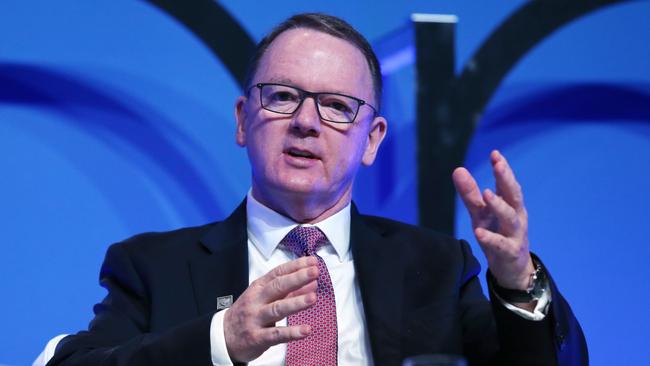Peter Coleman to leave Woodside with unfinished business
Peter Coleman will leave Woodside with a big ambition left unfulfilled. But early signs are his strategy will survive.

Peter Coleman has been at the helm of Woodside Petroleum for a decade but will leave with unfinished business.
After an absolutely torrid year for the global oil and gas industry — marked by a crash in crude prices, writedowns and massive job cuts — the decision by the 60-year-old to depart Australia’s biggest energy producer would not have come easily.
Coleman took over from the brash Don Voelte in 2011 and was typecast as the calm after the storm.
Born in Sale, Victoria, the low-key Coleman had spent over a quarter century at ExxonMobil and one of his first jobs was announcing a budget blowout for Woodside’s Pluto LNG project — built by Voelte — along with a production delay.
Voelte had also picked fights with Western Australia’s other big producer, US giant Chevron, who is a partner in the North West Shelf LNG plant and, at the time, the long-delayed Browse project.
Coleman smoothed out those tensions and eventually set his focus on the Burrup Hub plan, with the latest iteration involving gas from the remote Scarborough field being piped to an expanded Pluto plant and gas from Browse being processed through the existing NW Shelf plant which it operates.
Progress has been made but a COVID-sparked oil crash delayed both Scarborough and Browse, meaning Coleman will leave Woodside without fulfilling one of his big ambitions.
A final investment decision is due on Scarborough in the second half of 2021, whereas Browse is “from 2023” onwards.
Woodside chairman Richard Goyder expects a new CEO will probably be in charge by the time Woodside makes a decision on Scarborough.
Some of that Burrup timeline was out of Coleman’s hands due to the industry downturn, but the limited progress on developing Browse in particular is a major missing piece of the WA puzzle which Coleman had staked his strategy on.
Still, there were significant wins. Coleman simplified Scarborough by buying out Exxon, moved ahead on its Sangomar oil venture in Senegal and positioned the company to strengthen its grip on the NW Shelf plant as Chevron sells out. Pluto LNG has also been a stellar performer, regularly producing above its official capacity.
M&A has been a mixed bag. Woodside’s $11.6bn all share offer for Oil Search in 2015 was cast as creating a regional oil and gas champion combining the vast gas riches of Australia and Papua New Guinea. However, from the off the price was seen as inadequate and Woodside’s failure to spark Oil Search to engage on the tie-up saw it retreat on big ticket deals thereafter.
Similarly, Woodside’s $US3.75bn purchase in 2015 of Apache Corp’s stakes in the Wheatstone LNG project and Balnaves oil project in Western Australia along with Kitimat LNG in British Columbia also received a lukewarm reception. Major writedowns of the assets followed in the years since.
The rise of the onshore Perth Basin gas fields in Woodside’s back yard may have also been worth a punt, reducing the risk of more costly offshore exploration and production that has been the company’s bread and butter.
Coleman deserves credit for being outspoken on the need for carbon pricing in Australia but was less convincing on the company’s long-term strategy for handling a gathering transition away from fossil fuels due to climate change.
Still, Coleman receives some credit for what he didn’t do during his tenure. That includes a decision to shelve the blockbuster $40bn Browse LNG project earlier this decade which may have proved disastrous given depressed oil and gas markets this year.
All in all, Coleman will leave Woodside in sound shape but with a few regrets. His successor will have a suite of growth options but also tough decisions on whether to persist with a strategy that has yet to fulfil its promise.



To join the conversation, please log in. Don't have an account? Register
Join the conversation, you are commenting as Logout